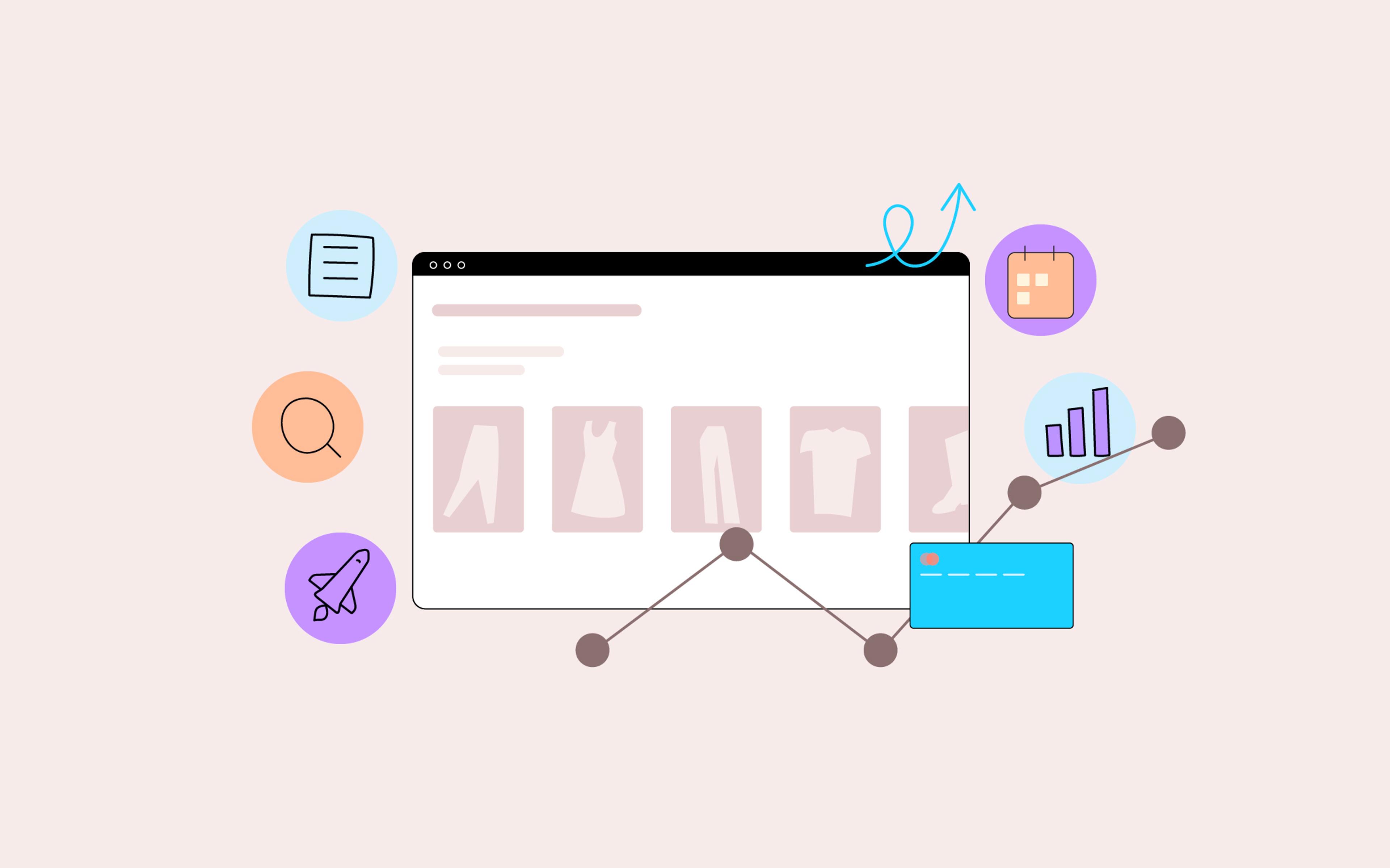The battle for e-commerce growth has never been more challenging. As brands navigate an increasingly complex digital landscape, they're caught in a perfect storm of rising costs and shifting consumer behaviors that's fundamentally reshaping the economics of e-commerce.
The data paints a clear picture: marketplaces now command 67% of global e-commerce sales volume, while DTC engagement continues to decline. Recent data shows only 15% of consumers reported browsing DTC sites more frequently in 2024, with 21% actually reducing their usage. This isn't a temporary trend—it reflects a fundamental shift in how consumers approach online shopping.
Two critical factors are driving this transformation. First, customer acquisition costs have risen dramatically, driven by increased competition and evolving privacy regulations. Second, consumer spending patterns have fundamentally changed—data shows 76% of consumers actively traded down across categories in Q3 2024, with this behavior even more pronounced among younger generations, where 86% of Gen Z and millennials report making such adjustments.
The economic context makes this particularly challenging. Research indicates 53% of consumers remain pessimistic about the economy, creating a "value now" mindset where every purchase must thoroughly justify its cost. Looking ahead, projections suggest 61% of consumers plan to maintain or reduce their overall spending levels in 2025.
Navigating the New DTC Economics
This environment has created a strategic dilemma for DTC brands.
The traditional growth playbook—centered around aggressive customer acquisition and premium pricing—is becoming increasingly unsustainable. While many brands are responding by shifting focus to marketplaces for easier scale and broader reach, this approach creates its own challenges: marketplaces inherently promote price-based competition, creating a race to the bottom that erodes brand value and profit margins. This is a trend we also explored in our recent article, Redefining the Digital Value Chain for Multi-Brand Retail.
However, our experience working with mid-market and enterprise brands suggests there's an underutilized lever that could help companies break free from this conundrum: customer experience (CX). When leveraged correctly, we've observed that customer experience can be transformed into a powerful engine for sustainable growth.
In this series of articles, we'll explore how brands can elevate customer experience from a basic operational requirement to a strategic differentiator that drives both top-line growth and bottom-line profitability.
Promoting Customer Experience from Cost Center to Value Driver
For too long, brands have viewed customer experience primarily as a cost center–a necessary investment to meet basic competitive standards. This perspective, while common, overlooks the tremendous potential of CX as a strategic growth driver. The evidence for this missed opportunity is compelling, both in terms of rising consumer expectations and documented business impact.
Today's consumers have radically higher expectations for their digital shopping experiences. Studies show 80% of customers now consider the digital experience to be just as important as the product itself, marking a fundamental shift in how value is perceived in e-commerce. These expectations manifest across multiple dimensions:
- Personalization has become non-negotiable: Research indicates 60% of consumers become repeat buyers when offered tailored experiences, while 42% express frustration with generic content. Despite this clear preference, only 14% of consumers report fully personalized online experiences, highlighting a significant opportunity gap.
- The cost of poor experiences has skyrocketed: Analysis reveals 80% of shoppers abandon purchases due to poor navigation, slow load times, or unclear product information. Even more concerning, 41% of customers permanently abandon brands after a single false decline.
- Speed and convenience set new benchmarks: Data shows 65% of consumers abandon their carts if delivery takes more than a week, demonstrating how operational excellence has become inextricably linked with customer experience.
The democratization of e-commerce technology, led by platforms like Shopify, has created an interesting paradox. While these platforms have made it easier for brands to deliver competent customer experiences, they've also led to a form of complacency. Many brands settle for the default experience provided by their platform, viewing it as "good enough" rather than a potential source of competitive advantage.
This is quite unfortunate, because recent research from McKinsey provides compelling evidence that savvy brands can transform customer experience from a cost center into a powerful growth engine. The numbers are striking:
- Research shows compensating for one lost customer requires acquiring three new customers, highlighting the multiplicative effect of customer experience on acquisition costs.
- Companies that excel at customer experience achieved more than double the revenue growth of "CX laggards" between 2016-2021.
- Data indicates companies that get growth right deliver 30% higher total return to shareholders and nearly double the shareholder value compared to industry peers.
Hopefully, the business case for treating customer experience as a value driver is clear and compelling. Yet many brands struggle to translate this opportunity into actionable strategies that deliver measurable results.
Deploying CX Strategically through Experience-Led Commerce
Based on our work with mid-market and enterprise brands at Nebulab, and inspired by McKinsey's research on Experience-Led Growth (XLG), we've been experimenting with an innovative approach we call "Experience-Led Commerce" (XLC). This framework treats customer experience not as a standalone function but as a systematic process for driving growth and profitability.
XLC differs from traditional growth strategies in several key ways:
- It amplifies traditional marketing-led growth strategies, helping brands maximize their marketing ROI by increasing customer lifetime value and reducing acquisition costs.
- It decouples value creation from product and pricing alone, providing a path to differentiation that allows brands to create incremental profit.
- It creates a virtuous cycle where improved experiences lead to higher customer retention, which in turn fosters organic customer acquisition and reduces the pressure created by acquisition.
McKinsey's research on companies that successfully implement experience-led approaches demonstrates the potential impact of this strategy. Their findings show that such companies can achieve remarkable results:
- 15-25% increase in cross-sell rates
- 5-10% boost in customer wallet share
- 20-30% improvement in satisfaction and engagement
For those willing to make the investment, the rewards can be transformative: all else being equal, brands with superior CX outperform their peers across all key performance indicators, creating a compelling case for treating customer experience not as a cost to be minimized but as a strategic business investment.
Going From Idea to Action
While the case for investing in customer experience is clear, many brands find themselves overwhelmed by the sheer number of opportunities for improvement. From personalization to omnichannel integration, from self-service capabilities to loyalty programs, the possibilities can seem endless. Without a systematic approach to evaluating and prioritizing these opportunities, brands risk pursuing initiatives that deliver suboptimal returns or dilute their core value proposition.
Experience-Led Commerce solves precisely that problem: it helps brands cut through this complexity by providing a structured framework for identifying, evaluating, and executing customer experience initiatives that drive measurable business results.
In our next article, we'll take a deep dive into the XLC framework, exploring its key components and showing you how to put it into practice in your organization.



